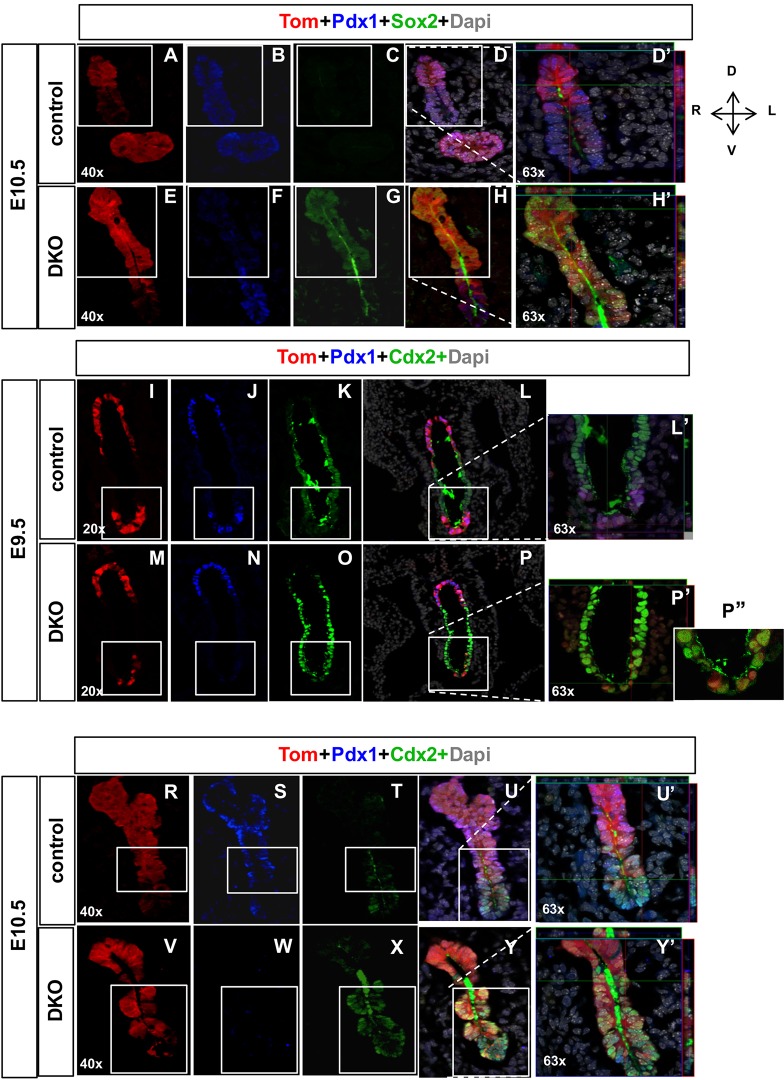Fig. 2.
Pancreatic lineage cells in pDKO embryos switch cell fates. (A-H′) Representative sections of immunofluorescence-stained pDKO dorsal pancreatic lineage cells from E10.5 embryos. In control embryos, pancreatic lineage cells express Pdx1 (blue) (B) but do not express Sox2 (green) (C). Merged images (D,D′) show overlapping Tomato-expressing (red) cells derived from the Pdx1 lineage and Pdx1-expressing cells (blue). In pDKO embryos (E-H′), Pdx1 lineage cells (E) do not express Pdx1 (F), but instead express Sox2 (G). Merged images (H,H′) show overlapping Tomato- and Sox2-expressing cells, suggesting that pancreatic-derived lineages are converted to a stomach identity. (I-P″) Representative sections of E9.5 pDKO foregut endoderm showing that pancreatic lineage cells express intestinal markers. In control embryos, Tomato+ pancreatic-derived lineages (I) express Pdx1 (J), but not Cdx2 (K), confirming their pancreatic identity. Images from merged channels (L,L′) show overlapping expression of Tomato+ cells and Pdx1+ cells. In the pDKO ventral pancreatic domain, a few pancreatic lineage cells (M) have lost their expression of Pdx1 (N) and start to express the intestinal cell marker Cdx2 (O), suggesting that these cells are converting into intestinal cells. Merged images are shown in P-P″. (R-Y′) At E10.5, control pancreatic lineage cells (R) continue to express Pdx1 (S), but not Cdx2 (T). Merged images are shown in U and U′. In pDKO, increasing numbers of Pdx1-derived Tomato+ lineage cells (V) do not express Pdx1 (W) and instead express Cdx2 (X). Merged channels (Y,Y′) demonstrate overlapping expression of Tomato and Cdx2, suggesting that these cells are switching to an intestinal cell fate. Boxes indicate regions shown at higher magnification in D′, H, L′, P′, U′ and Y′.

